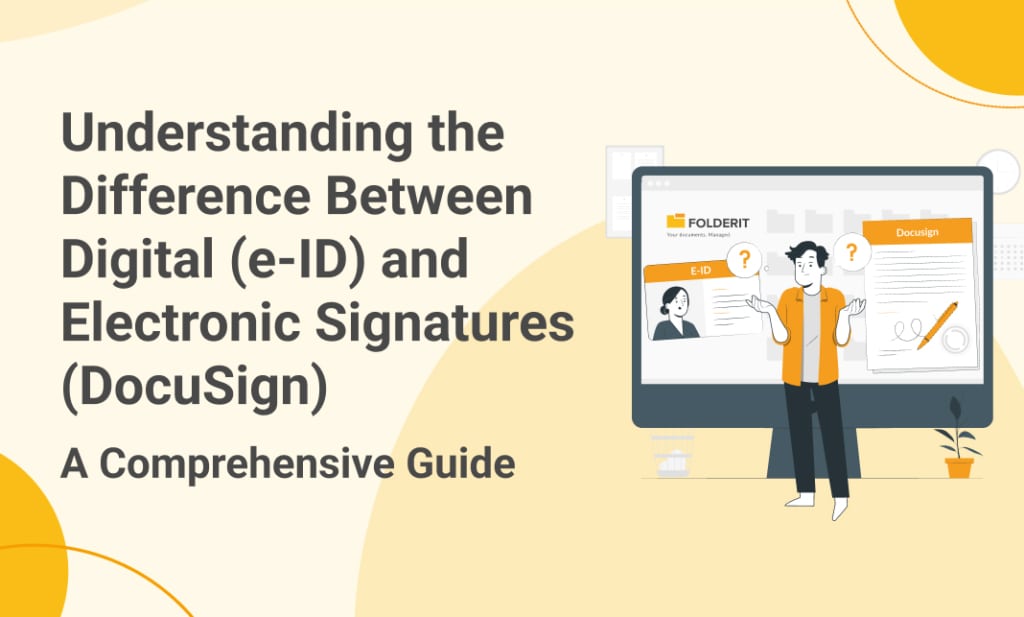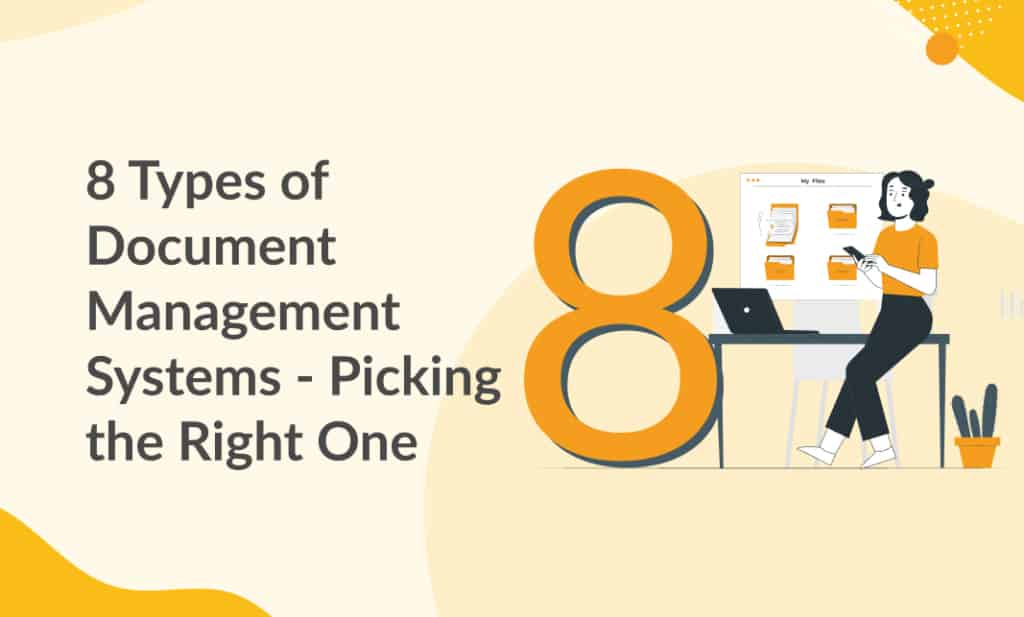The methods of authentication and signature have evolved significantly, offering both security and convenience. As such it is important to understand the difference between two prevalent forms of digital authentication, eID-based digital signatures and electronic signatures, and how these methods integrate with advanced document management systems like Folderit.
The Technicalities of eID-Based Digital Signatures
Introduction to eID-Based Digital Signatures
eID, or electronic identity, is a government-issued ID card embedded with a chip that facilitates citizen authentication for various online transactions, including document signing. This method utilizes a cryptographic process, providing encrypted proof of the signer’s identity, thus ensuring a high level of security and authenticity.
How eID-Based Digital Signatures Work
To sign a document using eID, individuals need to insert their ID card into a computer chip card reader and enter a PIN code. This process creates a non-visual, encrypted signature that verifies the signer’s identity. The underlying signature standard utilized by eID (and Mobile-ID) is ASIC-e, which conforms to the eIDAS regulation, a system that governs electronic identification and trust services for electronic transactions in the European Union.
eID-Based Digital Signatures and Folderit
Folderit is at the forefront of integrating this technology into its platform. When a signature request is received over Folderit, users can input their ID number and phone number, prompting a signature request to be sent to their phone. After entering the PIN, the document gets cryptographically signed on the user’s Folderit account, ensuring a secure and verified transaction.
This integration not only enhances the security of document transactions but also aligns with the stringent regulatory requirements of the eIDAS regulation, promising compliance and trust in the digital space.
Delving into the World of Electronic Signatures (DocuSign)
Introduction to Electronic Signatures
In contrast to eID-based digital signatures, electronic signatures facilitated by platforms like DocuSign offer a more visual and user-friendly approach to document signing. These platforms allow users to append graphical representations of their signatures on documents, making the process intuitive and accessible to a broader audience.
How Electronic Signatures Work
Electronic signatures operate by enabling users to create a digital representation of their signature, which can be placed on documents within the platform. This process often involves drawing the signature using a mouse or touchscreen device. The signature is then linked to the document through cryptographic methods, ensuring the integrity and authenticity of the signed document.
Electronic Signatures and Folderit
Folderit recognizes the versatility and user-friendliness of electronic signatures and is keen on integrating this technology into its platform. While the specifics of this integration are yet to be detailed, it is anticipated that Folderit users will soon be able to leverage the convenience of electronic signatures, complementing the existing eID-based signature method.
Industries Benefiting the Most
Both eID-based and electronic signatures have found substantial footing in various industries, including finance, healthcare, and legal sectors. These technologies streamline the document signing process, reduce paperwork, and enhance security, thus fostering efficiency and compliance in these industries.
Recap: Digital vs. Electronic Signatures Simplified
At its core, the distinction between digital and electronic signatures lies in their method and purpose.
Digital signatures, like eID-based ones, are rooted in cryptographic security, using a government-issued ID card or mobile method to authenticate and cryptographically sign documents. They offer an encrypted proof of authenticity without a visual representation.
On the other hand, electronic signatures, as seen with platforms like DocuSign, provide a visual representation of a person’s signature on a document, making it more intuitive for everyday use. While both methods aim to authenticate and secure documents, digital signatures emphasize cryptographic security, whereas electronic signatures focus on user-friendly visual confirmation. With Folderit’s platform, users can experience the best of both worlds, ensuring documents are both secure and easily accessible.
Bridging Technological Innovations with Folderit
In conclusion, the integration of both eID-based digital signatures and electronic signatures into Folderit’s platform represents a significant stride in the realm of document management systems. By offering a secure, compliant, and user-friendly environment for document transactions, Folderit stands as a beacon of innovation, bridging technological advancements with user needs.
By understanding the technical intricacies and potential integrations with Folderit, users can anticipate a future where document management is not only secure but also streamlined and intuitive. Stay tuned for more updates on how Folderit continues to revolutionize the digital document management space.



